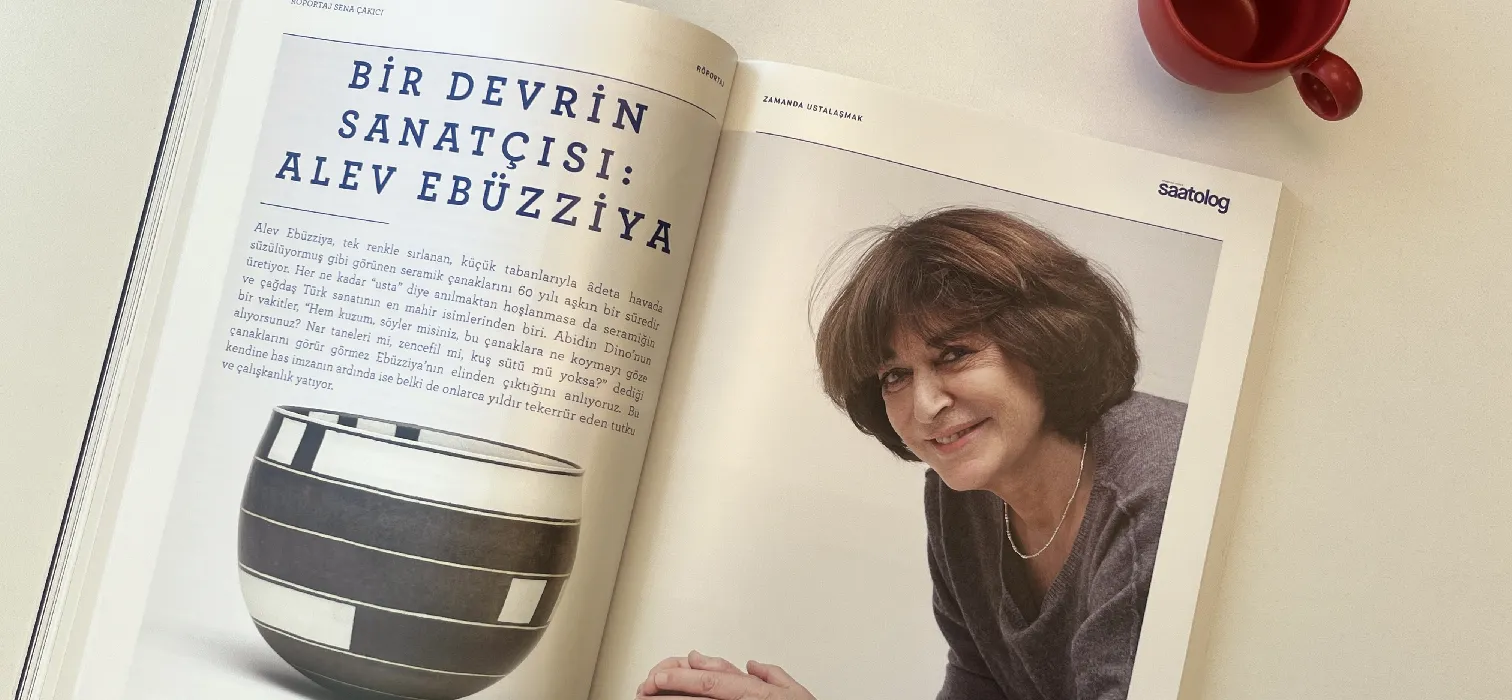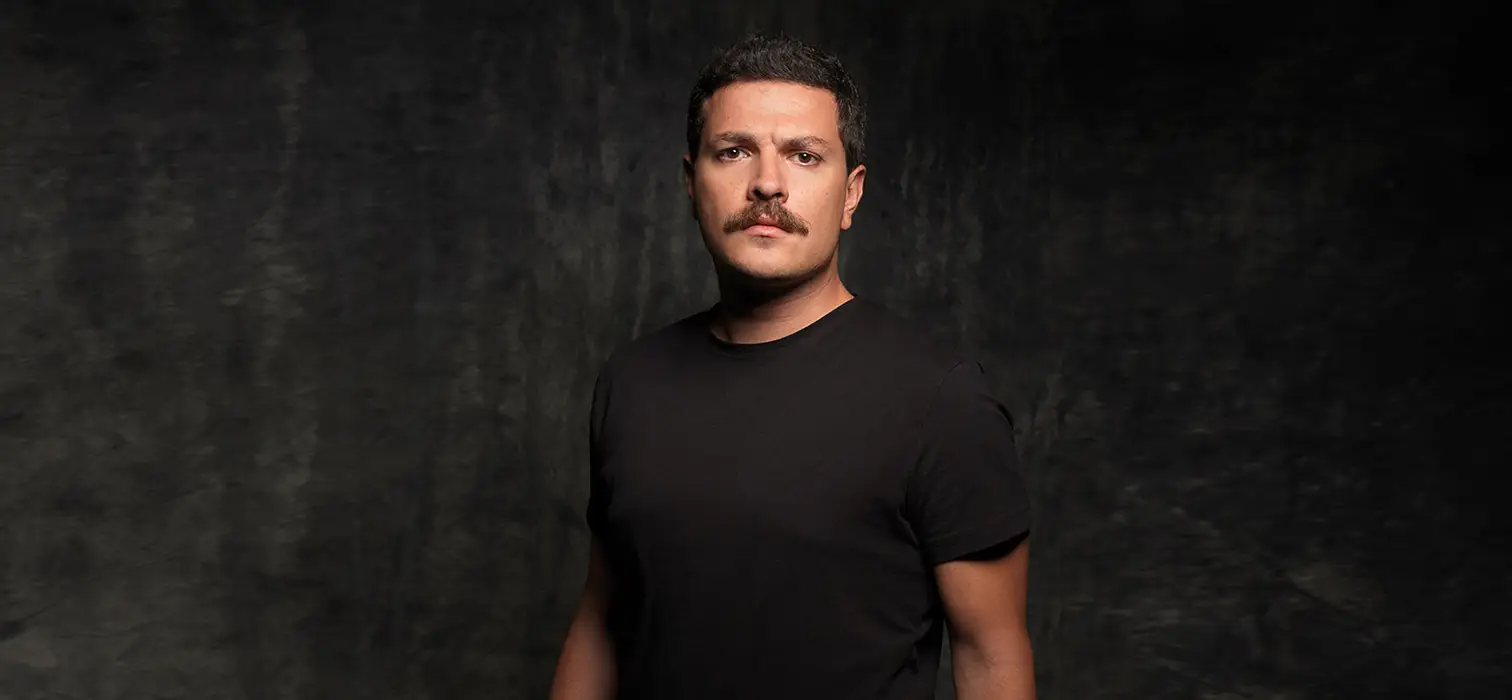
For more than 60 years, Alev Ebüzziya has been producing ceramic vessels glazed in a single color, with small bases that seem to float in the air. Although she doesn’t prefer being called a “master”, she is one of the most skillful names in ceramics and contemporary Turkish art. As soon as we see the bowls that Abidin Dino once asked, “What do you dare to put in these bowls, pomegranate seeds, ginger or bird’s milk?”, we realize that they are made by Ebüzziya’s hand. Behind this unique signature lies a passion and diligence that has perhaps been repeating itself for decades.

What is the secret of becoming a master over time?
There is no secret. You just need to work hard. No matter how talented you are, it is impossible to get anywhere if you don’t work hard.
One of your last exhibitions in Istanbul was “Repetition”, which you organized in the past years. Considering your artistic journey of more than half a century, how does “repetition” translate into life?
If I can still make another bowl today, it is a repetition. We can learn by repeating things over and over again. But this does not mean repeating the same thing. We can also think of “repetition” as doing the same thing in a different way.
You use the term production, not creation. What is the journey and production process of a single bowl like?
Yes, I have never called myself an artist, nor have I ever called what I do art. I always say that I produce work. As for the journey of a bowl; there is a production process that takes at least six hours with very intensive and heavy labor. With steps such as kneading the mud, preparing the bands, stacking them on top of each other, there is a tiring production phase that lasts for six hours. But I never complain about it being tiring.

When you don’t like a vessel, what are you doing with its?
I usually break them, but if it’s a bad job, I don’t throw them away immediately, because we can learn a lot from a bad job. Sometimes it is also good to be able to look at a bad work and say, “How did I do that?”, it is important to see our mistakes. But after a while I always break the vessels that don’t turn out the way I want. If I know I can do better, there is no question of settling for less.
What do you feel when you get the dish you want?
Definitelyi joy.
Your workshop is in Paris. You have been there for many years, is Paris a city that nourishes you?
Paris is one of the most important art centers of the world and a city I love very much. I think it is one of the most beautiful cities in the world even though it is not by the sea. Maybe even the most beautiful. I am very happy to live in Paris. Even my love for the city is enough to nourish me.
How is ceramic art in Paris?
It was definitely not developed in the first years I came to Paris. In fact, when I told people I was a ceramicist, they would ask me if I could fix their broken porcelain dolls. 35 years ago it was like this. Today, more people are making ceramics than ever before. This is not a bad thing, of course, if 3 percent of those who are involved in ceramics could make good ceramics, we would be happy!
There was a period when you were sadder than usual and you produced blue bowls, and another period red bowls. Is there a color you mainly work with nowadays?
I wanted to produce blue bowls during a difficult period because blue is a comforting color. It was definitely not an intellectual choice, I was in the mood for blue at that time. It was an instinctive choice. Those blue bowls became so famous that I don’t produce blue bowls anymore. I don’t have a color that I am working predominantly with nowadays, but I can say this; no matter what color or form I choose, I transfer a part of my soul to my work. When I am preparing for an exhibition, I think about creating a certain harmony, I want to create a unity like a musical phrase. What I want to capture is a harmony.
What attracts you to the bowl in terms of form? Is it the space inside?
The space inside, the color, what I add on top… Just as a human being is a whole with its skin, flesh and bones, so is a bowl. If it has a meaning with its interior, exterior and what it spreads around it, I can make the bowl I want. That’s why I don’t separate the inside from the outside, the color from the shape. Every bowl has a color and pattern it wants. We decide this after talking to the bowl.



